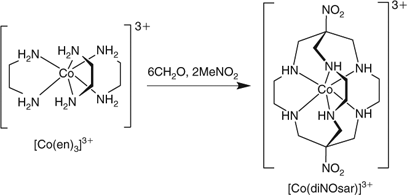Foreword to Professor Alan M. Sargeson Special Issue
Paul V. Bernhardt AA School of Chemistry and Molecular Biosciences, University of Queensland, Brisbane, Qld 4072, Australia. Email: p.bernhardt@uq.edu.au
Australian Journal of Chemistry 62(10) 1195-1195 https://doi.org/10.1071/CH09508
Published: 13 October 2009
This Special Issue of the Australian Journal of Chemistry is dedicated to Professor Alan M. Sargeson whose contributions to not only inorganic chemistry but Australian and international science were extraordinary. Over his career, Alan published more than 400 papers and more than 50 were published in Aust. J. Chem. Alan passed away in December 2008.
There are several accounts of Alan’s life in chemistry. For those wishing to gain a personal insight to his academic career, particularly in the early days, his published interview with Len Lindoy makes great reading.[1]
The papers in this issue come from all around the globe. All of the contributors accepted their invitation enthusiastically and without hesitation. Given space restrictions, there were only a limited number of papers that could be included here. Several contributions are from former postdoctoral fellows or graduate students who worked in his group at the Research School of Chemistry, Australian National University, and then went on to establish their own research programs. Others are international collaborators or those who simply admired and appreciated Alan’s contributions to chemistry.
The chemistry of Alan Sargeson spanned all areas. Apart from his truly innovative macrocyclic ‘cage’ chemistry, his research was also groundbreaking in areas of inorganic reaction mechanisms and bioinorganic chemistry; these areas all feature prominently in this issue.
My first appreciation of Sargeson chemistry came as a 3rd year chemistry undergraduate in 1985 when given the task of following synthesis of the complex [Co(diNOsar)]3+ that had been published a year before (Scheme 1).[2] The reaction involves the seemingly incongruous self assembly of nine molecules to give a crystalline product in high yield. The synthesis followed on from the groundbreaking publication reporting the analogous chemistry with ammonia, instead of nitromethane, as the capping reagent to create the first cage ligand sepulchrate complexed to CoIII and CoII.[3,4] There can be few better examples of the elegance of Sargeson ‘cage chemistry’ than this.

|
The extraordinary ease by which this reaction proceeded made a lasting personal impression and in the years to come I was drawn further into the field of metal-directed chemistry and macrocyclic ligand systems. Some 8 years later I was fortunate to join his group for a 2-year postdoctoral fellowship at the Research School of Chemistry.
I think I can speak for all contributors to this Issue in saying that it was a pleasure and an honour to know Alan Sargeson and to work with him. We trust that the papers published in this Issue are in keeping with the high standards that he upheld throughout his career.
[1]
L. F. Lindoy,
Coord. Chem. Rev. 2005, 249, 2731.
| Crossref | GoogleScholarGoogle Scholar |
CAS |
| Crossref | GoogleScholarGoogle Scholar |
CAS |
| Crossref | GoogleScholarGoogle Scholar |
CAS |
| Crossref | GoogleScholarGoogle Scholar |
CAS |



